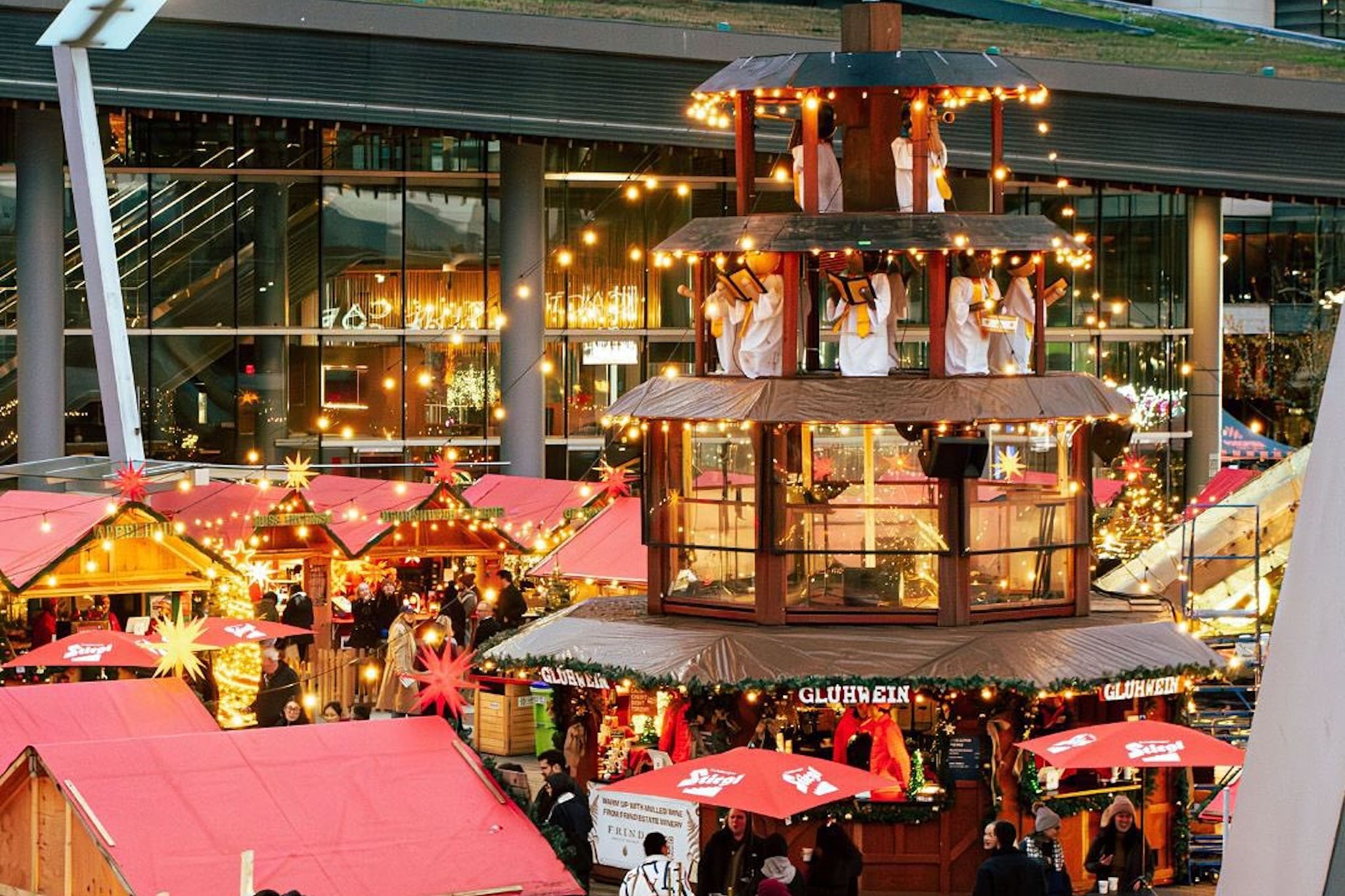Picture Credit: Netflix
In Your Dreams is the curtain-raiser for a group of fresh voices looking to make their impact on the animation industry. The debut film from Kuku Studios is helmed by Alex Woo, a former Pixar artist with such films as Ratatouille, WALL-E, and Finding Dory on his resumé, who boldly injects a traumatic childhood experience into the heart of his film.
Inspired by a period where Woo’s parents separated, In Your Dreams follows 12-year-old Stevie and eight-year-old Elliot, siblings in a family that’s falling apart. When Elliot discovers the myth of the dream-realising Sandman, the two embark on an adventure through their subconscious to try and save their parents’ marriage. In Your Dreams shines through its great characterisation and the grounded approach it takes to the subject matter. Just as much time is spent flying through dreams as it is in the real world, digging into the reality of divorce looming over this family.
What’s on Netflix caught up with Woo ahead of the film’s screening at the Manchester Animation Festival to chat about directing the film remotely from Hong Kong, how the film reflects his personality, and how he chose the film’s ending.
Warning: some slight spoilers towards the end of the chat!


Ahead of screening the film at the Manchester Animation Festival next week, are you anxious about showing it to animation nerds?
I have anxiety about showing it to anybody! But yes, especially animation nerds. I’ve worked for so long on this project, it’s been a nine-year journey, and so anytime you put that much love and energy into something, there’s always a mix of emotions. So part of me is really excited for the world to finally see it. Part of me is a little nervous, part of me is scared, part of me is relieved. There are just so many different emotions that I’m feeling. But more than anything, I’m just really excited, because we’re really proud of the film, and I think everybody did a fantastic job.
How did the process start for you? With an image, a theme or was it just the idea of exploring dreams?
It differs per project. With this film, it wasn’t an image; it was driven by the world of dreams, and how compelling that was, because it hadn’t really been done in the big-budget animated feature space yet. There was also the personal story of me wanting to talk about my parents nearly splitting up and me dealing with that, and then thematically tied to that personal story is trying to change the tide around dreams and nightmares. There’s so much pressure on people to achieve their dreams, and if you don’t, you’re considered a failure or a loser. I just think that is so toxic and so unhealthy. Most of life is not your dreams coming true. Sometimes that happens, and it’s great when it does, I got to make this movie – that was a dream come true. But most of my life is very normal and it’s very fraught with failures and things that turn out the way that I don’t want them to, but I get to experience those things and get through those things with the people that I love. That’s what makes life meaningful for me: when I can lean on somebody, they can lean on me, and it strengthens the bond that we have with each other. I wanted to try and capture that idea and explore that idea in this film.


Cr: Netflix © 2025
Was it difficult to channel a traumatic childhood memory into the film?
It wasn’t difficult; it was quite cathartic, actually. Oftentimes, art is a form of therapy for the artist. The scene when Stevie is watching her mom drive away, that was shot for shot, moment for moment, exactly what happened to me when I was a kid. Being able to put that on film was incredibly cathartic, and then having other people resonate with that scene, it almost made that whole moment worthwhile, because it allowed other people like me to connect with other people over something that I thought I was so isolated and alone with.
Is there a sibling you particularly identify with?
I think it’s pretty obvious, Stevie. I was so fortunate that Guillermo del Toro had seen an early version of the film. He really liked it, and we had a conversation; it was just me and me, and the minute he met me, he was like, ‘Oh, you’re Stevie.’ I was like, ‘Isn’t that obvious?’ Stevie is very much based on my personality. I am the older sibling. I am that type A obnoxious perfectionist. My brother is very much like Elliot. He’s chill and laid back and goes with the flow of life. I definitely identify more with Stevie than I do with Elliot, even though I love Elliot a lot more because he’s so much more charming and fun.
Was it difficult to strike a balance between showing Stevie to be mature and able to take on parental responsibility for Elliot while still feeling like a child?
It’s challenging. She’s about 12 in the movie, which is that transition point when you’re on the cusp of becoming a teenager, but there’s still a lot of childhood left inside of you. We really tried to capture that duality in her character. A lot of that was inspired by my friends’ kids who are around that age, and there’s a big part of them where they’re still just kids. But then there’s also a side of them where they’re more mature. They know more. They observe more. They carry the burden of the world on their shoulders. That’s very much what we tried to capture with Stevie.
How did you handle having to direct the movie remotely from Hong Kong for 18 months?
You just have to do it. The pandemic was difficult for everybody, and I didn’t make it easier on myself by being in Hong Kong. I was working California hours so from midnight to 10am every day, and then preparing for the next day, and then sleeping from like three o’clock to 11 o’clock. Doing that for 18 months was not good for my body, but I was so determined and so passionate about this film and making sure that I could do it justice and make it as compelling as possible. I’m so lucky that we had such a fantastic team and that we were able to make this film despite all the less-than-ideal circumstances.


Cr: Netflix © 2024
At the Manchester Animation Festival, you’ll be doing a making-of talk to a crowd full of animation students. What lessons did you learn from this experience that you want to impart to them?
First is patience. Animation takes a long time, so you have to really take care of yourself if you’re gonna make it across the finish line. Eat well, sleep well, exercise, they seem like such basic things, but your main tool as a filmmaker is your body and if your tool is not sharp, you can’t really be effective. I also think animation in particular is very collaborative, so you want to hire people that you trust and that you’re willing to collaborate with, and that you are actually open to having them take a lot of the burden off of your shoulders. I relied so heavily on my co-director, on my producers, on my production designer, on my composer. Every single person on the pipeline was better than me at their specific tasks, and I knew that, that’s why I wanted to work with them. As a director, half of your job is casting the right people and putting them in the right roles.
When did Netflix enter the project, and how were they as partners?
They’ve been our partners from pretty early on.
We developed the project ourselves in-house. We had a 30-minute pitch of the whole movie, concept paintings, and it was pretty fleshed out. Netflix ended up optioning it, giving us money to write the script, and on the second or third draft, they greenlit it. From there, they kind of just let us go. They’ve been fantastic partners, they’ve believed in the vision of the movie from the very get-go, and they’ve been supportive all along the way.
Was it important for Kuku Studios’ first film to be an original story?
It was. I have nothing against sequels, but I prefer original stories. There is something really nice about watching an original movie. It’s fresh, it can be unexpected. There’s something really exciting about an original film. We were so lucky that we pitched this at a time when Netflix animation was really growing, and they really wanted to make a big splash in the industry, and so they greenlit a lot of originals, and so we were lucky that we were one of them.


Cr: Netflix © 2025
The film ends in a neater way than I was expecting at some points. Was there ever a consideration of something more dark?
Definitely, that was one of the hardest things to land in the film: how do we handle this with honesty and authenticity? There were two options: either the parents stay together or they separate. We tried both of them and they didn’t really work. When they separated, there was no hope; it felt too disappointing, and that wasn’t the feeling I wanted audiences to leave the film with. Though when we had the parents stay together, it felt too neat or contrived, it didn’t feel believable. And so what we decided to do was to leave it somewhat ambiguous. So, in the narration at the end of the film, Stevie says, ‘And for my parents, they’re still figuring things out. But the important thing is that we’re always going to be together.’
That was my way of creating an ambiguous ending around what the status of the parents’ relationship was, because ultimately, it doesn’t really matter what their label is. What matters is that they’re always going to love each other and they’re always going to be a family. It was very much inspired by my own parents. My mom eventually came back, my parents would work things out. But when I was in college, they separated again. They ended up coming back. And then when I was making this film, they almost got divorced again. So it has been this ebb and flow with them. There’s that scene when mom and dad are carrying the final box marked ‘fragile’. That’s a metaphor for their relationship. They’re trying to work together, but it’s not quite working out. That was my way of showing the messiness of life.
In Your Dreams streams on Netflix globally from November 14th, 2025.















